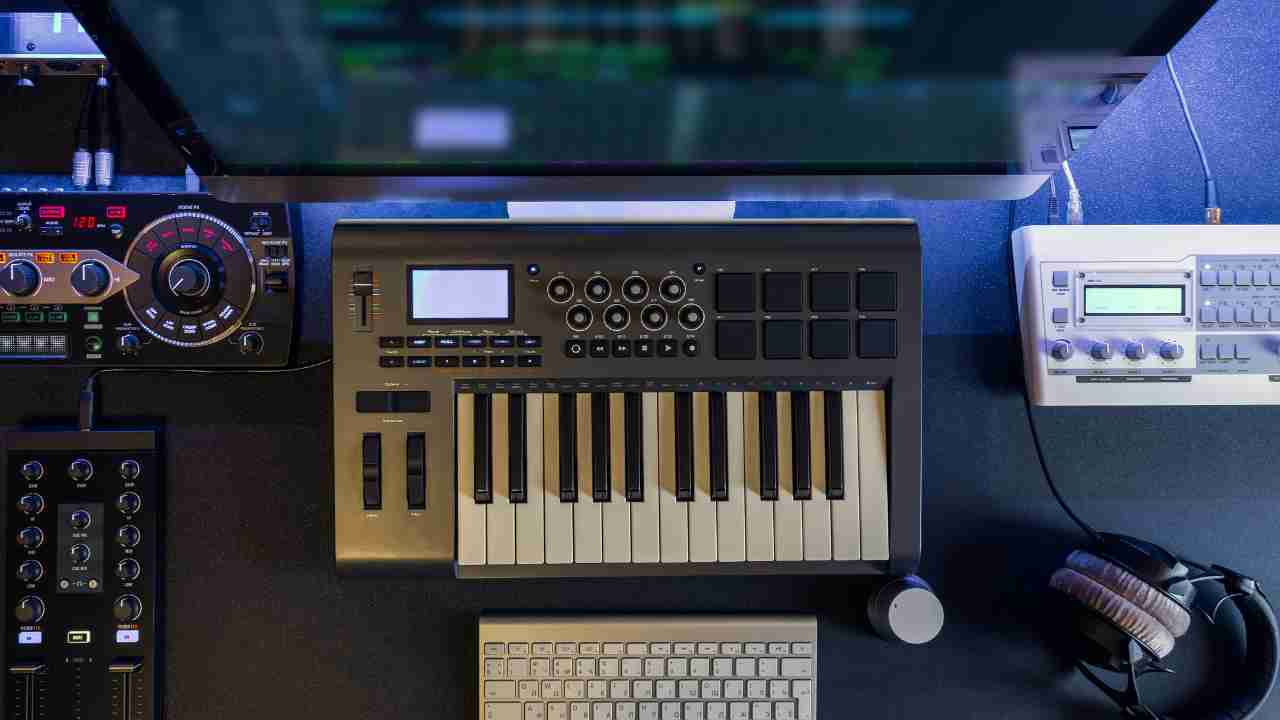- 1. Why use synthesizers? Add new dimensions of sound to traditional arrangements
- 2. Pick the right synth for the job – Consider portability, polyphony, and included presets for your genre
- 3. Start simple – Experiment with basic waveforms and controls to develop your synth voice
- 4. Layer synths with acoustic instruments sparingly at first – Subtle incorporation prevents clashes
- 5. Designate synth parts that complement existing arrangements – Glue disparate sections together harmonically
- 6. Modulate synths live for evolving textures – Experiment fearlessly with knobs during slower sections
- 7. Get creative with effects – Reverb, delay, and overdrive can turn a synth into a lush pad or lead
Over the past several decades, the development of music technology like synthesizers, samplers and MIDI has significantly altered how many musicians approach their craft.
While some traditionalists were skeptical of these electronic innovations disturbing time-honored techniques, many forward-thinking artists embraced synthesizers and found creative ways to combine them with more established styles.
As both the technology and our perspectives have continued to progress, it’s become clear that synthesizers need not replace acoustic instruments, but rather can expand musical possibilities when integrated thoughtfully.
From subtle backing textures to robust lead lines, synths offer expansive tonal color that can enrich traditional songs and performances when applied judiciously.
Why use synthesizers? Add new dimensions of sound to traditional arrangements
As musicians continue to search for new ways to enhance their live performances, the incorporation of synthesizers into traditional music setups has become increasingly popular. With the ability to produce a vast array of sounds, these electronic instruments provide endless possibilities for creative expression.
By weaving synthesizers into an existing arrangement, musicians can add entirely new dimensions of sound and texture that weren’t possible before. Whether it’s emulating classic sounds from the ’80s or crafting entirely new sonic landscapes, music synthesizers offer exciting possibilities for musicians looking to explore new sonic territory.
Pick the right synth for the job – Consider portability, polyphony, and included presets for your genre
Adding a music synthesizer to your traditional music setup can create a unique sound that will intrigue and excite your audience. However, selecting the right synthesizer can be a daunting task.
It’s important to consider factors such as portability, polyphony, and included presets for your genre. Thankfully, synthesizer technology has come a long way and there are now various models available to suit every need.
Whether you’re a beginner or an experienced musician, finding the perfect synthesizer can help take your music to the next level. By carefully considering your options and selecting the right synthesizer for your needs, you can be confident that you’ll be able to integrate it seamlessly into your established traditional music setup.
Start simple – Experiment with basic waveforms and controls to develop your synth voice
As musicians continue to explore new ways to create and innovate, it’s no surprise that music synthesizers have become increasingly popular in traditional music setups. Although integrating synthesizers into your music can seem like a daunting task, starting simple will set you on the path to developing your unique synth voice.
Experimenting with basic waveforms and controls will help you understand the foundations of synthesis and allow you to craft a sound that complements your traditional instruments. Learning to layer and manipulate sounds as you gain more knowledge will give you the freedom to create truly unique music.
Layer synths with acoustic instruments sparingly at first – Subtle incorporation prevents clashes
Incorporating music synthesizers into traditional setups can be an exciting way to breathe new life into your performances. However, it’s crucial to approach the process with care to prevent clashes with acoustic instruments. The key here is subtlety.
Begin by layering synths with acoustic instruments sparingly and in a way that complements, rather than overwhelms, the overall sound. As you become more comfortable with the integration, gradually expand the role of your synthesizer until it becomes an integral part of your sound.
With patience, attention to detail, and a bit of experimentation, you can create a performance that blends the best of both worlds.
Designate synth parts that complement existing arrangements – Glue disparate sections together harmonically
The integration of synthesizers in music arrangements comes with diverse possibilities for sound manipulation and creativity. To achieve a successful integration, it is important to designate synth parts that complement existing arrangements, ensuring efficient performance and non-intrusive blending.
With synthesizers, it is possible to glue disparate sections together harmonically, creating a unique and harmonious sound that would otherwise not be possible through traditional instruments.
The key to integrating synthesizers into traditional music setups is to strike a balance between the traditional and modern sounds, creating a rich tapestry of music that is both familiar and exciting.
Modulate synths live for evolving textures – Experiment fearlessly with knobs during slower sections
Music synthesizers have swept the world by storm with their unique sound and versatility. Integrating synthesizers into traditional music setups has opened new avenues of creativity for musicians.
One of the key advantages of synthesizers is the ability to modulate them live for evolving textures. During slower sections, musicians can experiment fearlessly with knobs and various parameters to create unique soundscapes that elevate the overall listening experience.
With careful integration and experimentation, music synthesizers can add an entirely new dimension to traditional music setups and bring new life to timeless compositions.
Get creative with effects – Reverb, delay, and overdrive can turn a synth into a lush pad or lead
Synthesizers have opened up a whole new world of sound possibilities, allowing musicians to craft lush pads or striking leads that add depth and emotion to their music.
By getting creative with effects like reverb, delay, and overdrive, synthesizers can be transformed and layered to create complex and dynamic sounds.
As such, these unique instruments have quickly become a staple in the modern music industry, allowing musicians to push the boundaries of what’s possible when it comes to producing sound.







